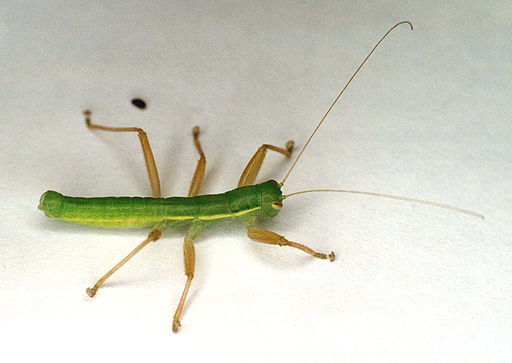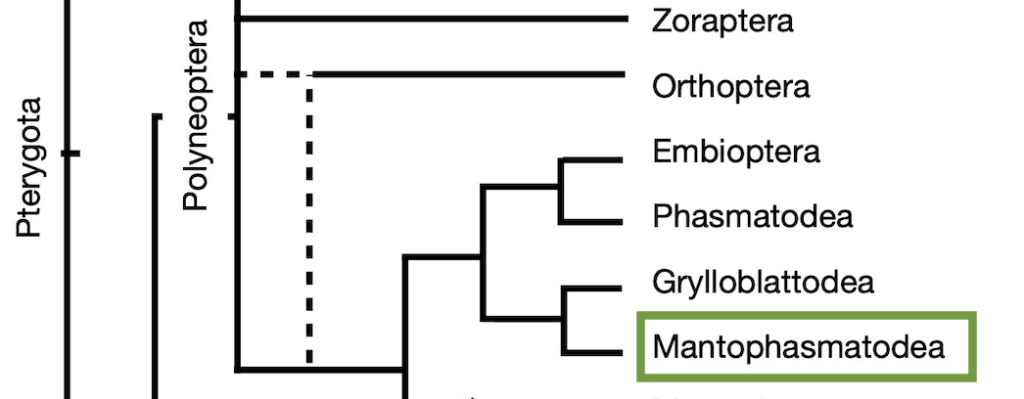24 Orders of Insects: Mantophasmatodea


Order Mantophasmatodea
Mantophasmatodea
- common name: heelwalkers; so named because they hold the distal tarsomere up off the ground when walking
- a newly described order in 2002; name is a combination of Mantodea and Phasmatodea to reflect its superficial similarity to these two orders
- only six to eight species worldwide; found only in south-west Africa including Namibia and Tanzania.
- smallest order of insects; most closely related to Grylloblattodea
- most are nocturnal predators; hide in grass and rock crevices
Characteristics of Mantophasmatodea
Adults
- Small to medium (11-25mm), somewhat cylindrical body shape
- Hypognathous, mandibulate; compound eyes large, ocelli absent; antennae long, multi-segmented
- wingless; fore and mid-legs have bristles and spines
- cerci small in female but prominent in male
Immatures
- Immature stages (nymphs) resemble small adults

